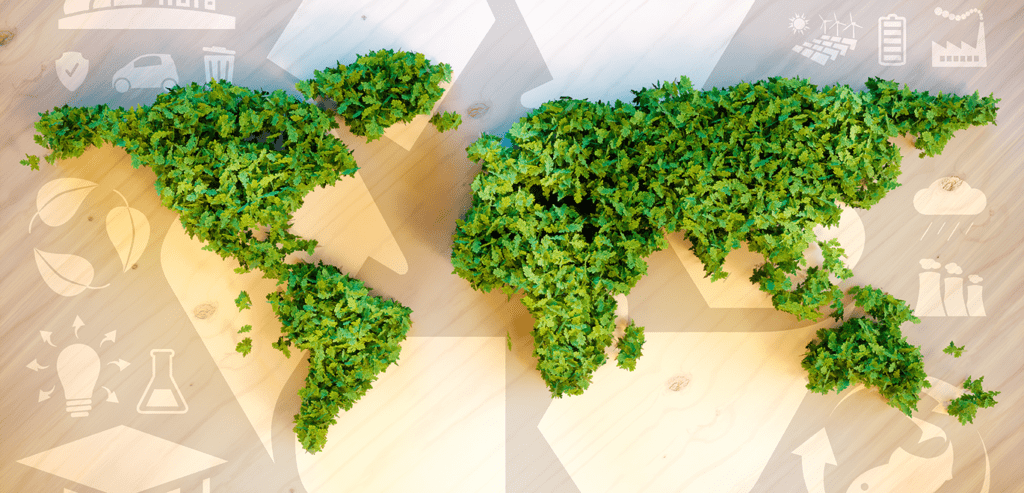
Benjamin Wall, author of “Amazon: Managing Extraordinary Success in 5-D Value”
A review of dozens of companies around the world retailing sustainable value revealed many prominent examples from the fashion industry, stimulated in reaction to the much-criticized background of the branch in non-sustainable practices. Many clothes are sewn in slum sweatshops; both the chemical dyes in the clothes as well as the pesticides for growing the cotton seep into and harm the groundwater; and many animals lose their lives to contribute their fur, skin or hide to fashion articles. Some brands are presenting a very different image.
Three examples of an entrepreneurial vision directly connecting product to “people & planet,” one each from Europe, the Americas and Asia, illustrate ways retailers can market themselves as committed to sustainability.
In the vision at SKOTFashion in Holland (www.skotfashion.com), a passion for clothing meets a passion for sustainability. When presenting the high-quality and thus long-lasting products, transparency is the key: the savings in water and toxic chemicals for the planet are quantified for every piece of clothing, and the breakdown of the selling price into materials, labor, transport, sales tax and gross margin for the people involved is also reported.
The Reformation (thereformation.com) headquartered in Los Angeles uses the most sustainable fabrics to create effortless silhouettes perfectly fitted to celebrate the feminine figure. It goes a step further in transparency by itemizing savings in carbon dioxide, water and waste for each product as well as reporting extensively on both its own materials standards as well as the 46 production facilities around the world the brand uses, all selected using numerous criteria belonging to people and planet.
Using only upcycled textile waste from quality producers in ten different materials, including one collection combining waste from military uniforms and bridal wear, is the hallmark of the R Collective (thercollective.com) in Hong Kong. Their products thereby reduce the carbon footprint by 60% for the Planet while showcasing the people—designer, manufacturer and seamstress—for specific collections.
Transparency enables consumers to shape the future
The key value offered to customers by these companies “born sustainable” is the transparent impact of the individual choice. Customers gain value from the direct connection between the product they purchase and the benefits for a specific designer, seamstress, factory, raw material, production process, entrepreneurial vision and so forth.
Extensive transparency and clear choice of this kind, alongside detailed product descriptions and reviews, is only possible online; physical stores can never offer this volume of interconnected information.
These ecommerce retailers utilize the potential of the internet so that their customers can choose the product with the most benefits for themselves while targeting the benefits of the dollars they’re spending for “people and planet.” Customers see that their choices contribute concretely to shape a sustainable world they value.
Systematic sustainable value from ecommerce leaders
The big guns in online retail have taken great steps to systematically build sustainability into their operations and supply chains and have adjusted their retailing visions to include sustainability. They reduce waste and emissions, run recycling programs, promote supplier diversity and modern working conditions, implement supplier standards from industry associations and so on. Consumers at such retailers can feel assured that sustainable value is being systematically generated.
However, only small steps have been taken towards the direct connection of product to “people and planet.” In the USA, for example, Amazon Elements approximates the kind of transparency described above regarding raw materials and the supplier company for baby wipes, vitamin supplements and whey protein powder.
Walmart allows vendors to present their own product information in the webshop to make their own connections: e.g. a producer of organic olive oil describes the close relation between the local farmers and its own master craftsmen while announcing its organic certification. Target publishes its global factory list.
Customers of these companies lack the direct connection with which they themselves can directly steer the kinds of businesses that they want to see flourish.
A large-scale online retailer coming close to the direct transparency of the “born sustainable” companies is Ikea. The furniture and household retailer offers several product guides with details of hundreds of products for a more sustainable life. For example the designer of a bamboo lamp explains how material waste in producing the product is reduced while the benefits of bamboo as a material are highlighted. But the comprehensive transparency to the producer or the costs is not reported.
Five steps to begin creating transparent sustainable value
Established ecommerce companies can move towards directly connecting sustainable value between product and “people and planet” via a scalable plan. The following steps mix those taken by the younger and older retailers:
- Review the supply chain: Estimate the current status and future potential of the most important suppliers and processes regarding performance on key criteria for “people and planet.” Keep it high-level; details are not important at this stage.
- Review the market conditions: Review the certifications and other standards currently in the relevant markets. In parallel identify, localize and define the specific demands for sustainable value coming from the company’s target customer groups. Focus groups are useful for the latter.
- Develop the vision of sustainable value for “people and planet”: In cross-functional workshops define the goals and objectives relating to sustainable value for the entire company and for the most important product categories; in iterative workshops adjust the company’s vision to integrate the sustainable goals as well as convert the objectives into quantified targets for the most appropriate metrics.
- Engage with suppliers and with own processes to define and quantify targets: Starting with the “low-hanging fruit” steadily work towards attaining ever more of the targets by re-designing products according to re-defined requirements; working with suppliers to identify or innovate new materials; re-engineering supply chain processes, etc.; always emphasizing the win-win benefits for all.
- Design the processes and website for the direct connection: Specify the information needed from the supply chain and the processes to collect it. Re-design the website to present the information in an appealing manner.
The advantage of this kind of transformation is that it can be conducted in a step-change manner. Ecommerce companies can begin with selected high-priority products and manual processes and then move step-by-step towards covering the entire product range and implementing scalable processes.
In the course of these step changes, insights and experience will be gathered to help reach more substantial decisions. Companies will evaluate the need to switch suppliers and seek out new sources of supply as well as consider which activities in the value chain to out- and in-source.
The future lies in the direct connection of sustainable value
Successful retail has always generated value by clearly connecting a specific purchase to benefits for the individual consumer. The prediction in this contribution is that this direct connection will continue to be the formula for success in the future.
Online retailers are best placed to offer value in directly connecting the benefits of each product with benefits for “people and planet.” This direct connection has a foothold today in fashion, appears also in food and cosmetics, and will soon spread into further product categories.
Benjamin Wall is the author of “Amazon: Managing Extraordinary Success in 5-D Value”.
Favorite
